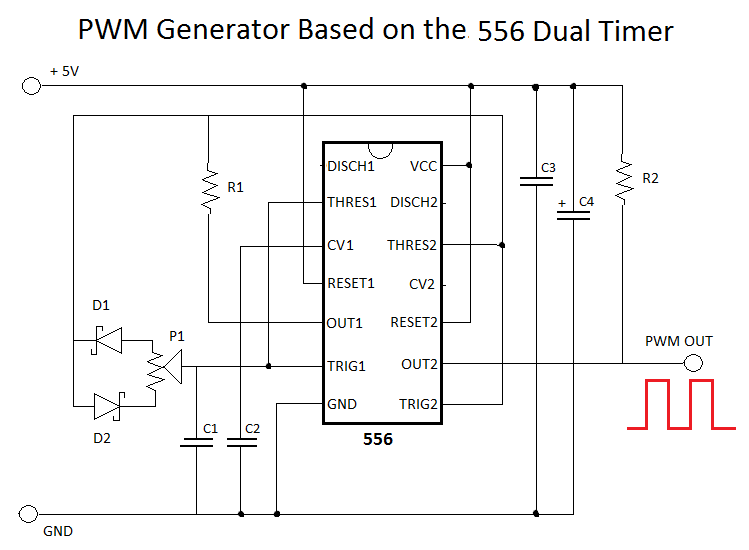I'm looking at building a 4-wire PC fan PWM circuit. The goal of such a circuit is to send a PWM control signal to a 4 wire PC fan, so that the fan can modulate it's speed (NOT to pulse the 12V supply).
One circut for this that is widely cited is the 556 based circuit located far down on this page. The circuit looks like this:
I can't for the life of me see how this circuit can work. My understanding of the goal such a circuit is (per the specs here) to produce a stream of pulses at 25kHz, and to vary the width of each of those pulses.
This circuit has the pot tied into Trig1, so as far as I can tell it'll vary both the width of the pulses as well as the frequency of the pulses? Or do I just not understand it (won't be a shock).
I would have assumed that one should build an astable 555 triggering at 25kHz, and then feed that into a monostable 555 that varies the pulse width?
Side note: If this circuit isn't the best approach for a fan PWM, can anyone recommend a better one?

